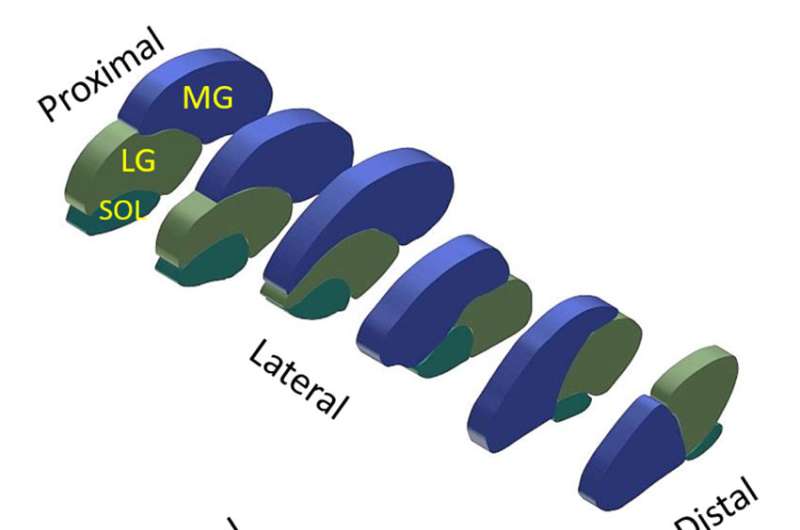Achilles is more than just one tendon

The Achilles tendon is the strongest tendon in the human body. It can bear loads exceeding over 900 kilograms during running. Despite its strength, it is prone to injuries and it is not yet well known what factors predict good or bad recovery from injuries.
Studies with the measurement of Achilles tendon forces have proved that loading may not be distributed evenly throughout the entire cross-sectional area of the tendon. This is possible because the Achilles serves as a common tendon for three calf muscles, which all have different properties and functions.
The soleus muscle extends and flexes only the ankle joint but the gastrocnemius muscle (medial and lateral heads) also flexes the knee. Due to this, different parts of the Achilles tendon may move in relation to each other. The investigation of movements within the Achilles tendon helps to understand its normal and abnormal function and give insight on research related to tendon injuries.
Professor of Kinesiology Taija Juutinen Finni from the University of Jyväskylä, Finland, together with international collaborators, has studied Achilles tendon function in an animal model. The experiments were performed at the Vrije Universiteit Amsterdam with Dr. Huub Maas. The research results were published in Scandinavian Journal of Medicine & Science in Sports.
The research showed for the first time that relative movements within the tendon were associated with the underlying tendon anatomy. Further, the study found that loading the soleus muscle lengthens its respective subtendon more than when loading the gastrocnemius muscle. The results indicate that the subtendons have different stiffness.
The observation in rats helps to explain some of the reported results in human experiments. It may be possible that the different stiffness of tendons helps to maximise the storage and use of elastic energy in walking, running and jumping, in which the roles of the soleus and gastrocnemius muscles are slightly different.
More information: Nonuniform displacement and strain between the soleus and gastrocnemius subtendons of rat Achilles tendon, Scandinavian Journal of Medicine & Science in Sports, www.ncbi.nlm.nih.gov/pubmed/29094399
















